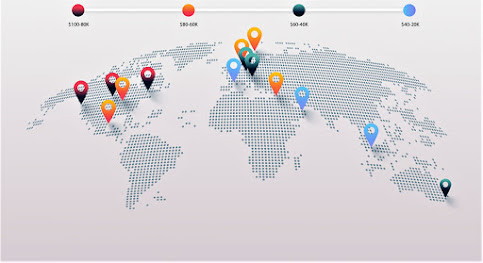Gartner Says That Future Demands Advanced Mobile Apps
According to a recent survey by Gartner, Inc., as the user application touchpoints are increasing, there will surely be an expansion in device types, which will make the future of mobile app development a multi-experience.
To meet the user and industry’s demand, software development platform vendors have already started to expand their value proposition beyond conventional mobile and web apps. As a result, platforms with multi-experience capabilities are being used to develop chatbots and other such extended reality-powered tools to enhance the mobile and web experience.
Most Popular Enterprise Applications
Despite web browsing serving as the favoured digital touchpoint for the modern-age users, mobile apps are proliferating. The reason behind such growth lies in the widespread adoption of immersive devices such as smartphones, smartwatches, fitness tracking devices, and many other voice-driven devices. This trend is introducing new modes of user interaction, including touch, type, gestures, and natural language, which expand across the user journey.
Among enterprises that have developed and deployed at least three different types of applications (other than web apps), the most common are mobile apps (91 percent). “These figures are higher than any other application types we asked about, and suggest that the maturity of mobile app development is necessary for expansion into other interaction modalities,” said Jaison Wong, research vice president at Gartner.
As per the survey, conversational apps are the second-most developed application type where voice apps are standing at 73 percent and chatbots at 60 percent.
Technologies that drive Multi-Experience Development
Sixty-one percent of the respondents favoured the cloud-hosted AI (Artificial Intelligence) services as the most widely used technology that have supported multi-experience development. Native Android and iOS development and mobile back-end development hold the second and third position with 48 percent and 45 percent respectively. Seemingly, the conversational user interfaces, voice and image recognition coupled with several other AI services, are the next commonplace within mobile apps.
Barriers With Multi-experience Development
In Gartner’s survey, 40 percent of the respondents agreed that the top barrier in building compelling multi-experience apps is the alignment of business requirements and IT capabilities. Additionally, more than one-fourth of the respondents expressed development skills and UX expertise as one of the prime barriers to multi-experience development. However, Mr Wong said that in the case of emerging technologies, the skills gap could not be exaggerated, whilst identifying the prime factors that hinder the scaling of digital initiatives, including strategies to multi-experience app development.
Final Verdict
Undoubtedly, emerging technologies are taking over the conventional method of mobile app development. Fintech companies are one of these industries taking advantage of new technology, while mobile banking app development, are using AI and ML technologies to automate the regular payments. Also, the use of Augmented Reality technology is getting famous for inventory management software development.
If you’re looking for an IT development partner who can provide you with the complete IT support for your upcoming IT projects, Nimble AppGenie is your best pick. We, at Nimble AppGenie, are experts in mobile app development for both end-consumer level and SaaS application development level.



Comments
Post a Comment